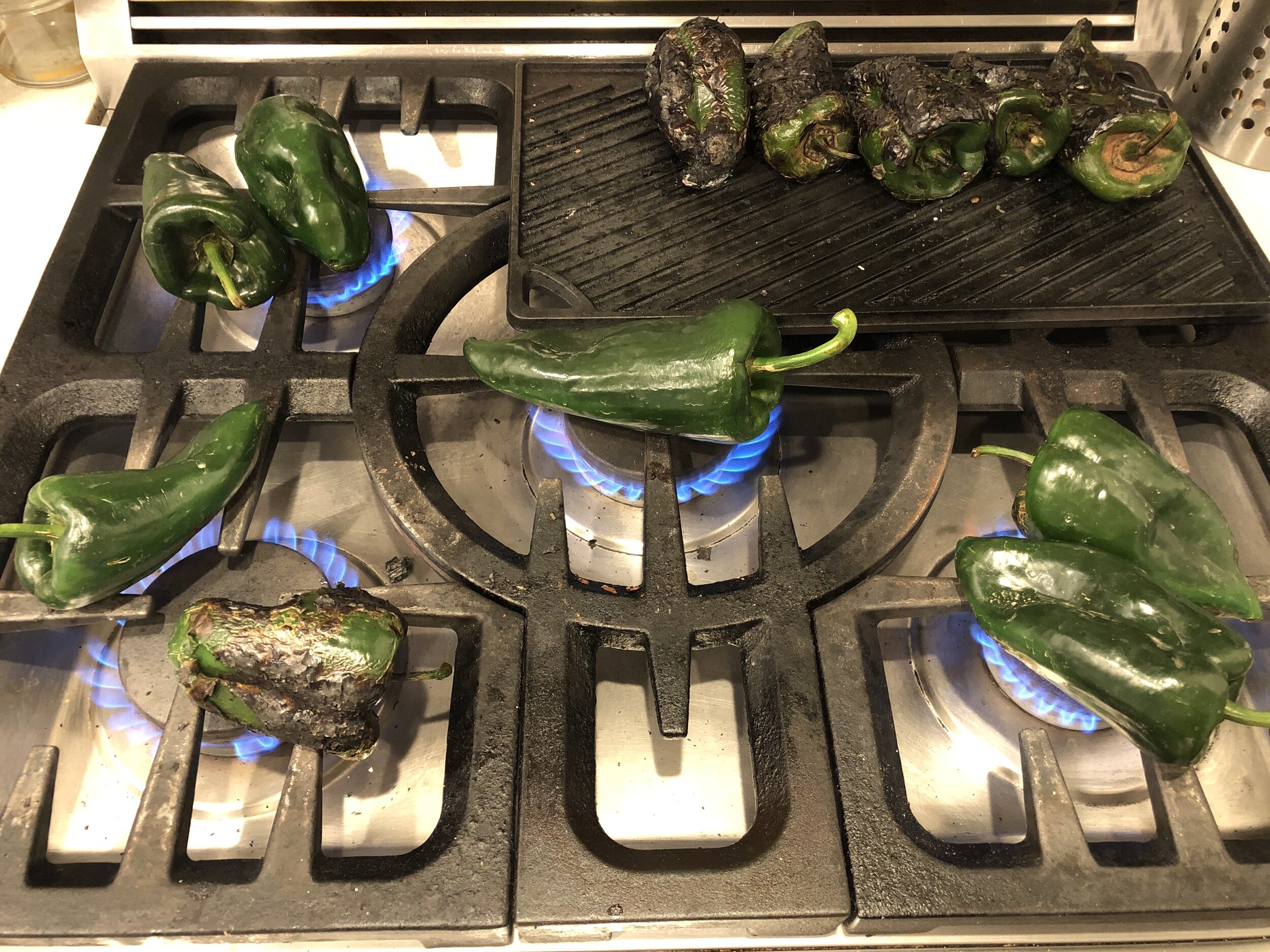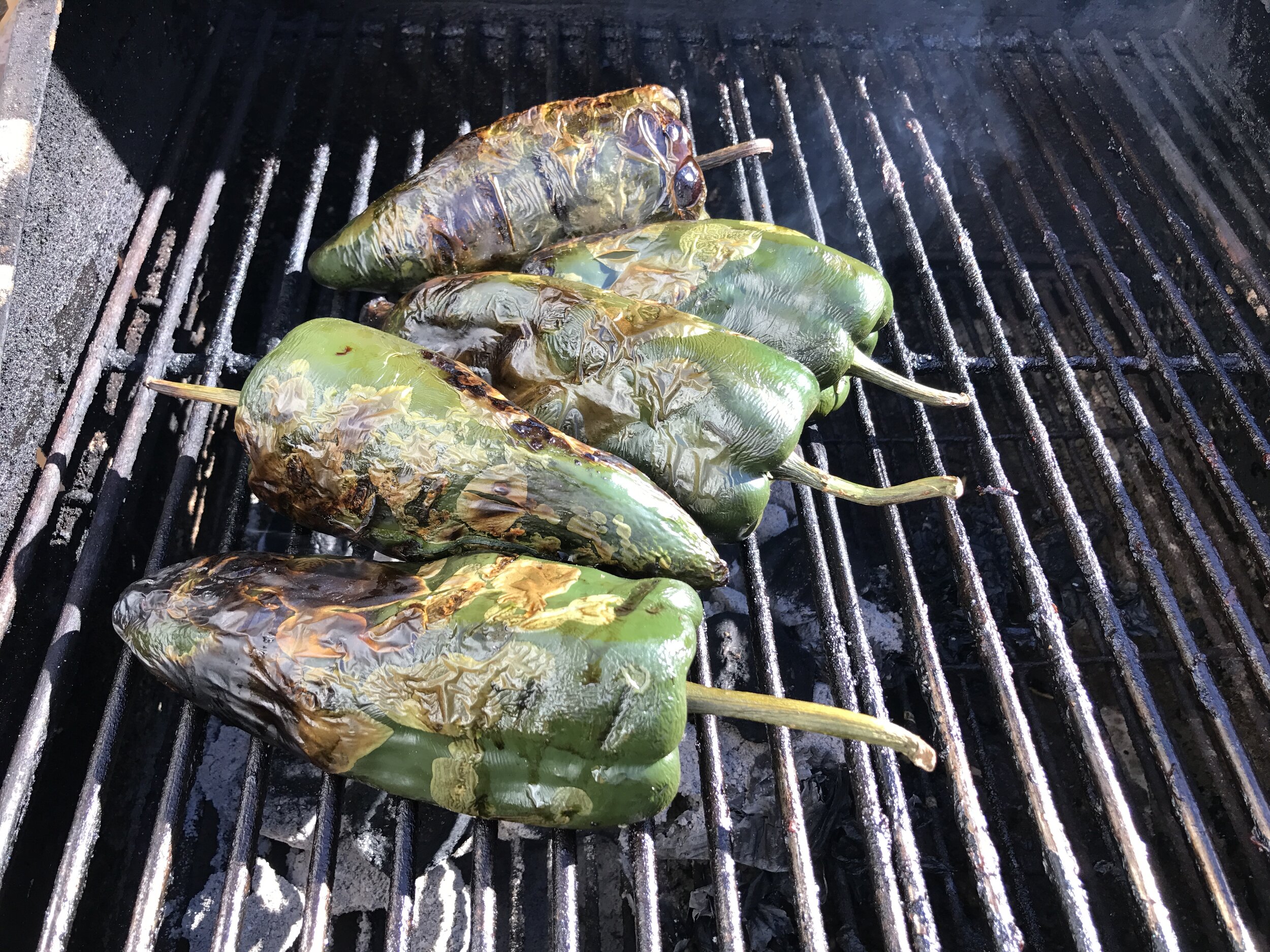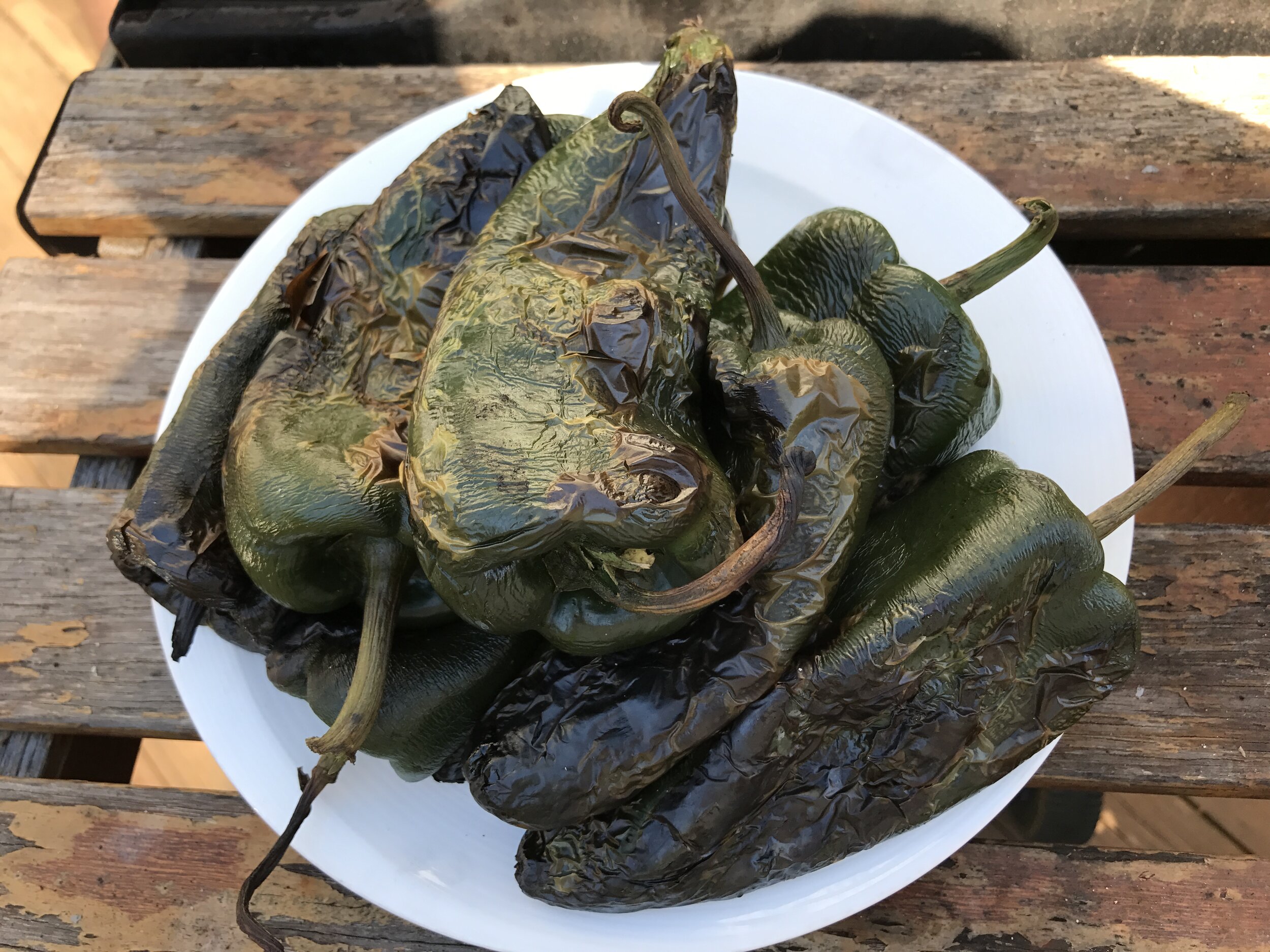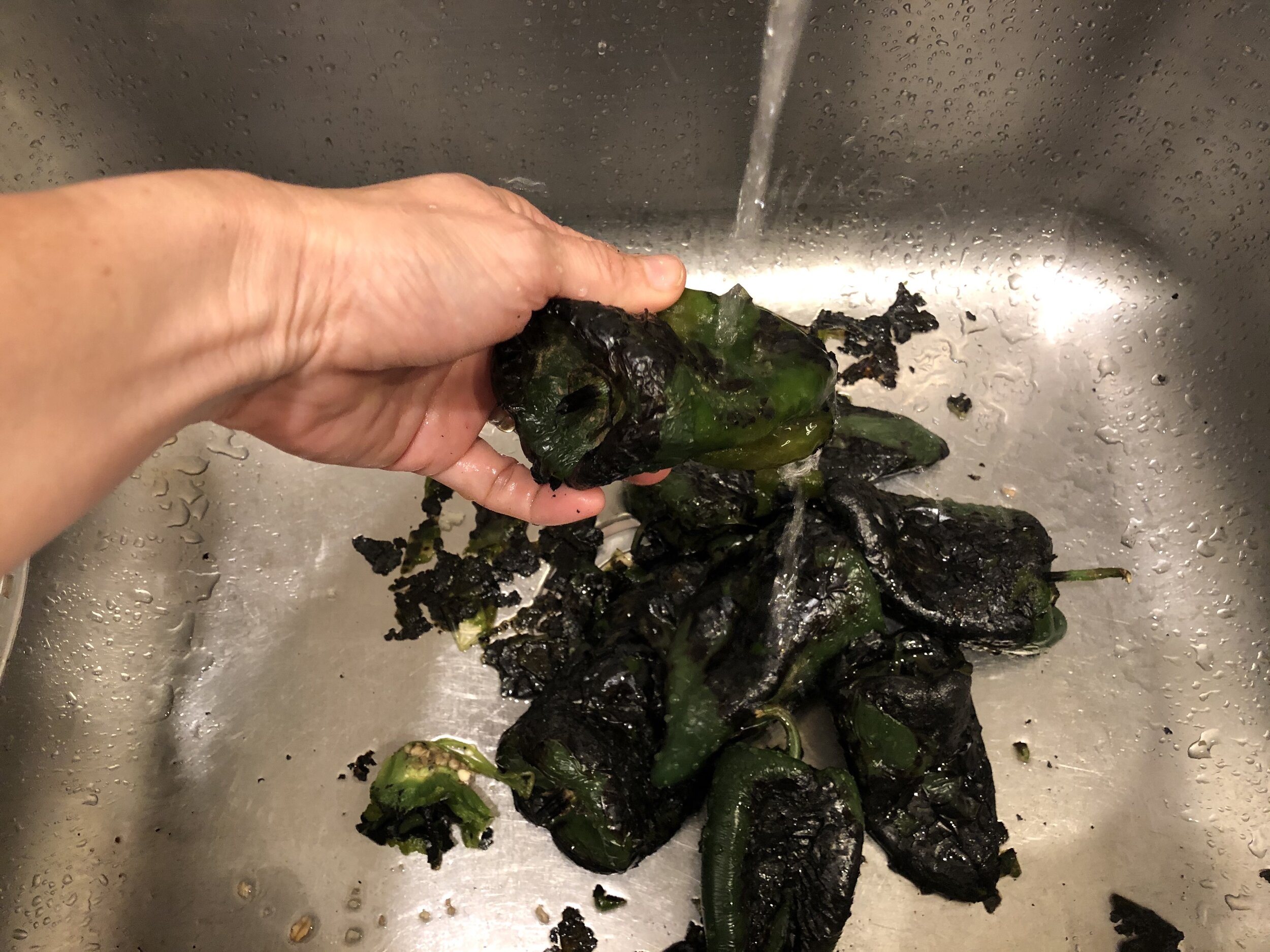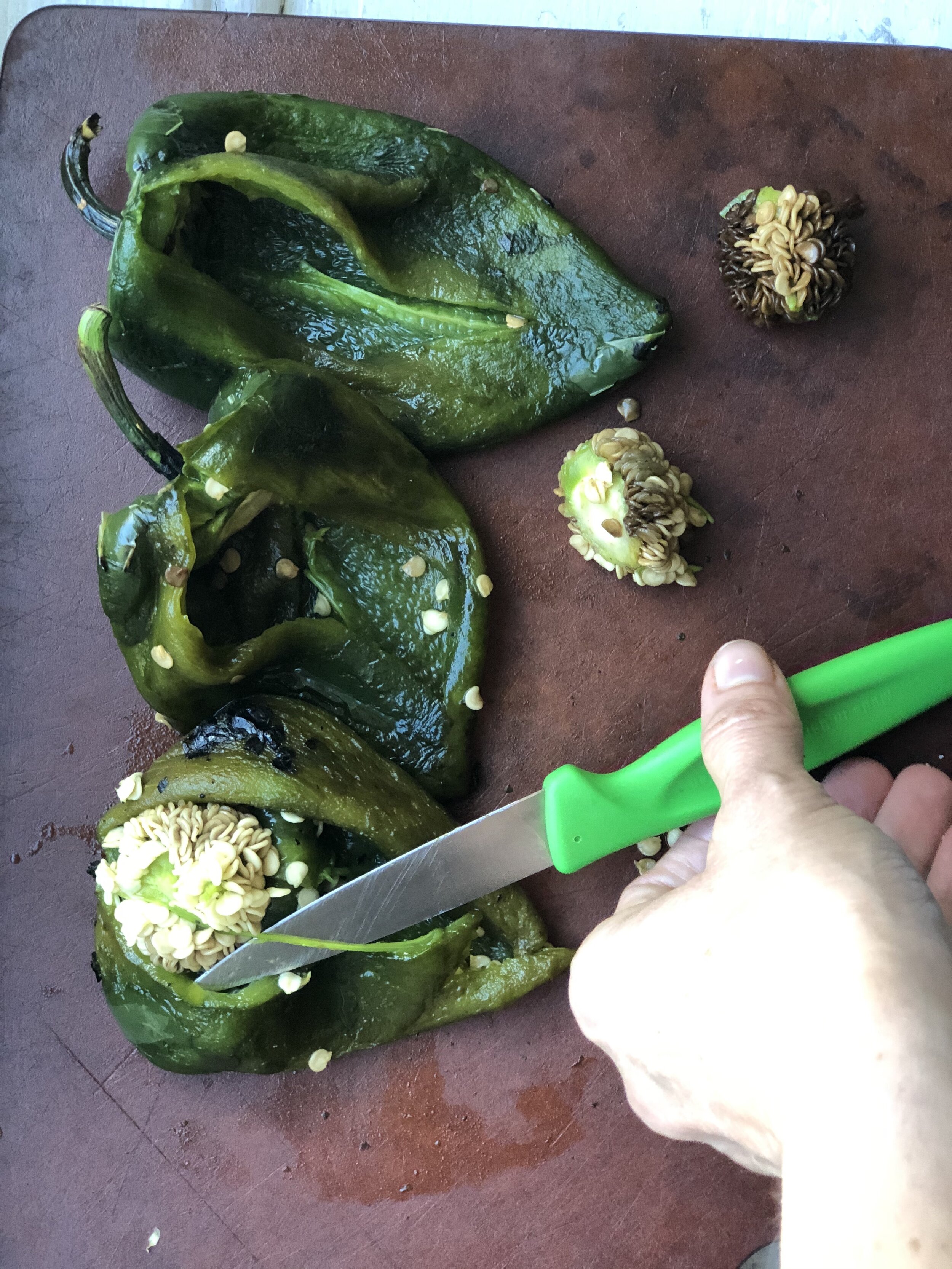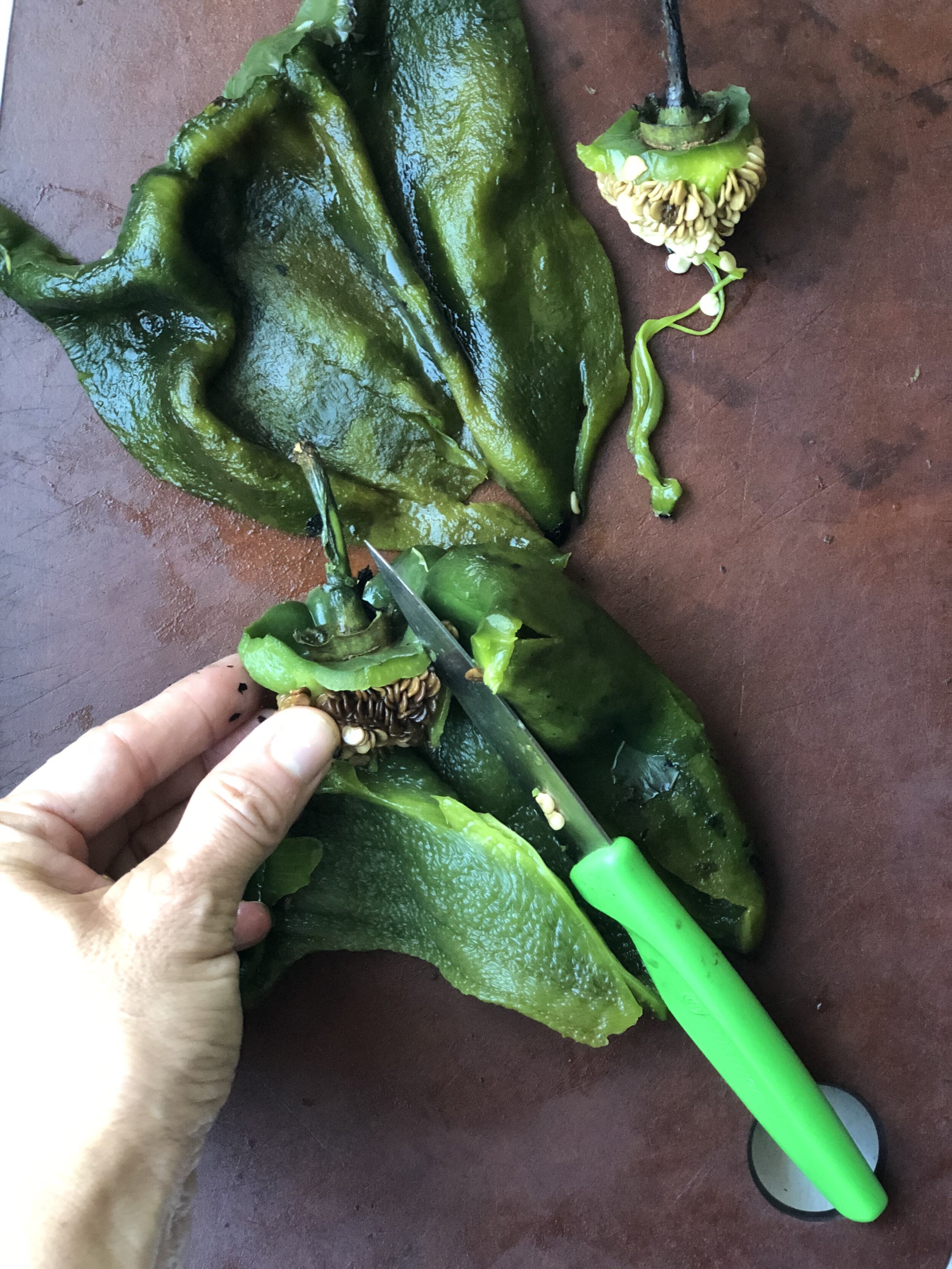Poblano Peppers - How to
Poblano in stages: Raw, Roasted, Peeled
Poblano is a very popular fresh chili pepper widely use in Mexico.
Poblanos are use for stuffing, for soups and creams, for fillings in tacos, as a garnish and a topping, and even to flavor licor. The possibilities are endless and the spectrum is wide. In the spotlight, they do very well, as with the famous Chile in Nogada, a stuffed pepper recipe from the 1800’s widely served throughout September in commemoration of our Independence, or as with Rajas, on the opposite side of fanciness, equally loved, ubiquitous to street food and homey preparations. To sum up this little presentation card, poblanos are versatile and easy to love.
How to prep them:
Poblanos need a little love before putting them into use. A 3-step process that will make your poblanos taste amazing. Roasting them by direct fire or in a hot oven, peeling off the skin and deseeding them.
Here’s a detailed explanation on how to do it:
1) Rinse Poblanos
2) Place poblanos directly on the burners of a gas stove and turn them on to medium/high heat. Once they’ve charred on one side with the skin looking blackened and blister BUT not carbonized, flip them (a pair of tongues will do) and continue until the entire poblano is charred. About 5 to 8 minutes.
2.A) Alternatively, you can use the grill as shown below. Or, put them into a 425.F hot oven until blistered, although it will take much longer.
3) Place charred poblanos under running water and peel them by rubbing off the skin with your fingers. It will come off easily. Preferably do this right after they are charred, so the pepper keeps its beautiful vivid green color and stays firm-specially useful for stuffing.
4) To deseed them, carefully make a slit close to the stem and with your fingers or a pairing knife pull out the core with its seeds. If you don’t need whole poblanos, just tear them open with your fingers and pull the seeds and pod out.
Liso! Poblanos are ready to use.
Pro tip—Dealing with heat: Poblanos are ranked with 1500 Scoville units compared with the 200K plus of habaneros but on occasion, they can be absolutely devilish and make your eyes water. All part of the fun. So, how do you know? Don’t worry, no need to taste every pepper to see how fiery it is. The nose knows better and will detect a pungent smell at the time of rinsing or peeling the pepper, sort of like receiving an invisible punch to your nose-a gentle one though. To tame the rare fiery renegade, soak it in heavily salted water and use more salt on your preparation.

